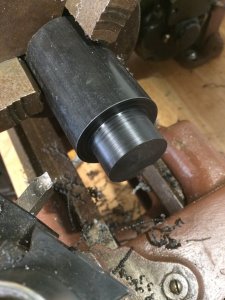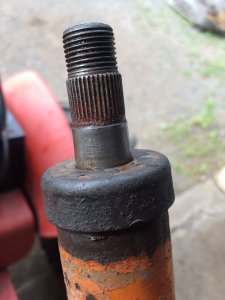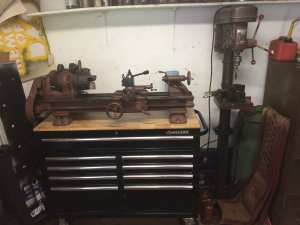Today I made my first real part! I have played around with steel a little, but not much. I needed a bushing for the steering column on the 67 PK and used delrin. I thought that a plastic would be a great material to learn on since it is so soft. Long story short, I am very happy with the result. Here is the long story:
Of course, my first step was to chuck a piece of stock up.

Next I faced, and turned down the stock to the smaller diameter I needed.

I then turned the larger side, followed by a 3/4 hole in the center. After I drilled the hole, I was ready to part it off.

After parting, I did a test fit and noticed it would not fit over the steering shaft, immediately I knew this would be an issue. The chuck I have now has about 0.020 runout. Still, I decided to hope for the best. I used one of the cheap carbide bits to bore the hole. In a perfect scenario, I would have a 4 jaw for this, I will have to add that to my wish list. Even with the 3 jaw, I was able to enlarge the hole to fit perfectly.

The column has no more play, and I am very happy with the result. I definitely need to clean the indicators on the dials, as they are very hard to read, I will likely color fill them also. A light on the underside of the shelf above the lathe is priority before I use it again. I kept telling myself I need to hook up a better switch, but have yet to do it. I need to do that also, I do not like reaching over the chuck for the switch.
Here are some pictures of it being assembled. The finish came out decent, the rest fits marred up the outside and ruined the nice finish; however, it will not be seen.















